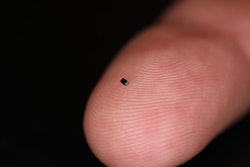A recent IEEE SPECTRUM article discussed a new method for helping people with neuromuscular disorders regain some independence. It involves a stent-like electrode, dubbed a “stentrode,” being implanted in the brain, which allows the user to control a computer with thought. The breakthrough makes real-world use of brain-computer interfaces feasible.
New Electrodes Let Humans Control Computers with Thought
Stent-like electrodes prove home brain-computer interfaces are possible.
Nov 3, 2020
Researched List: Blister Machines for Life Sciences
Need a blister machine for life sciences packaging? Our curated list features companies serving pharmaceutical, medical device, nutraceutical, and cosmetic industries. Download to access company names, locations, machine specifications, descriptions, and more.
Download Now
Sustainable Healthcare Packaging Solutions That Work
Industry leaders share proven strategies for reducing packaging emissions by up to 70% while meeting safety and regulatory requirements.
Read More
Downloads



















